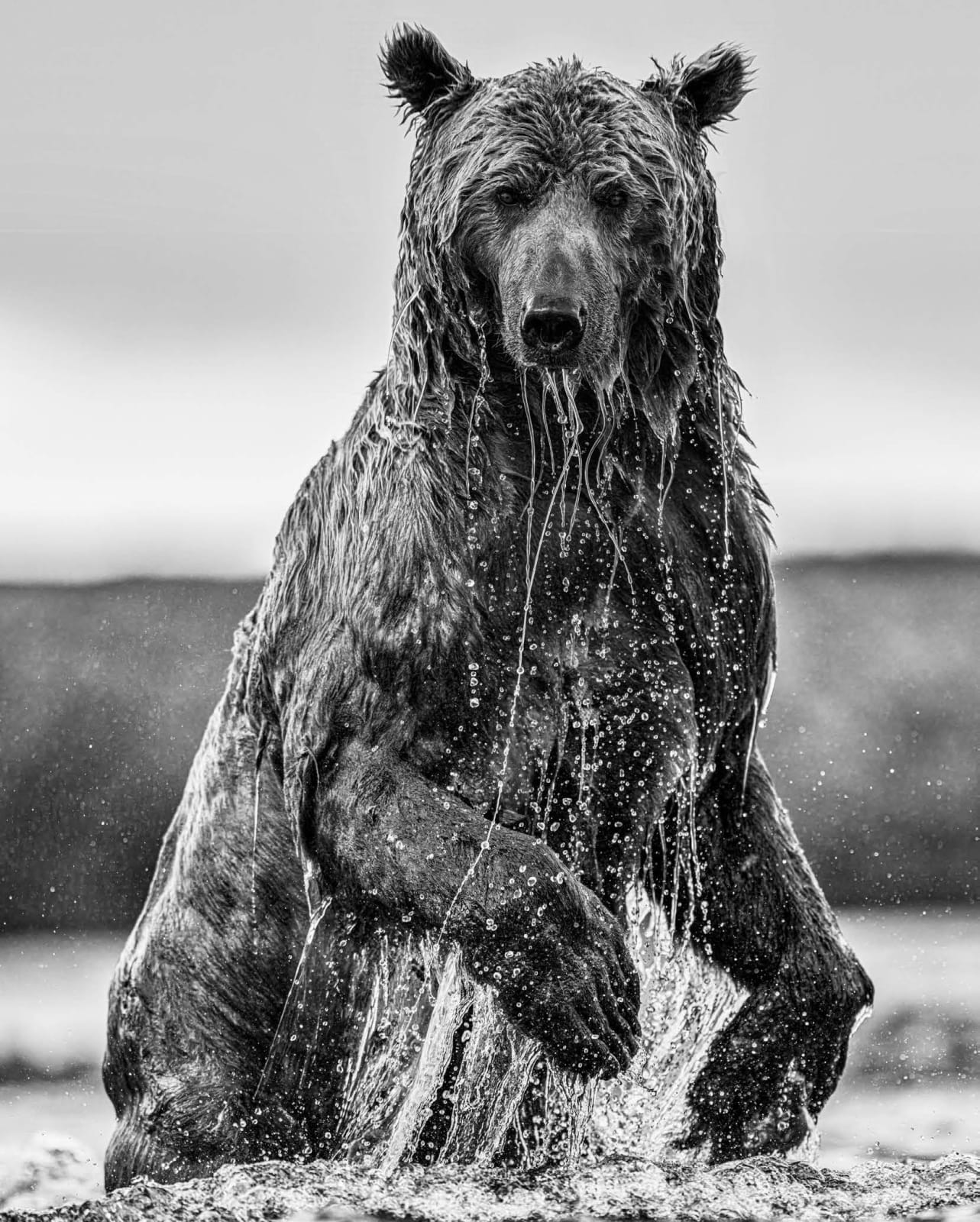David Yarrow Scottish, b. 1966
The Salmon Run, 2025
Archival Pigment Print
Available in two sizes:
Standard - 48 x 84 inches
Large - 64 x 118 inches
Standard - 48 x 84 inches
Large - 64 x 118 inches
Edition of 12 plus 3 artist's proofs
Signed, editioned and dated on bottom
The Salmon Run Funnel Creek, Alaska - 2025 There is a pleasing compositional balance to this action shot and that is pure luck. I am not in control of the...
The Salmon Run
Funnel Creek, Alaska - 2025
There is a pleasing compositional balance to this action shot and that is pure luck. I am not in control of the bear’s line of attack and at moments like this, I can neither change my lens nor my position relative to the bear. The sequence as it pertains to my camera is over within two seconds and then it’s just a question of angles. If the bear’s more distant eye is obscured by his nose, then the image loses its power, but luckily, it’s right there. Furthermore, the distribution of the water patterns is also a gift that I am not sure I truly earned.
Whilst I sense that East African wildlife has been photographed to the point of saturation, the great outdoors of America, and in particular Alaska, still has a pull on me. I have not been back to Kenya or Tanzania for many years now, but I return to Alaska almost every year. Our success rate is not good, but that is in part because we believe any released shot must transcend at some level. I am simply a photographer, not a wildlife photographer, and I have great respect for those smart wildlife photographers who make a good living; it’s never been a tougher ask. Everyone is a photographer in 2025 and it’s difficult to be authentic.
In many ways it’s a numbers game. Alaska’s expansive 650,000 square miles of territory makes it America’s largest state by far, but it has a population equivalent to less than two years of visitors to the Maasai Mara in Kenya, which covers just 600 square miles. That’s an instructive statistic. Bear photography in Alaska is popular in the National Parks of Katmai and Lake Clark, both of which are 100 times the size of the Maasai Mara. It is so much easier to be alone and in the wild in Alaska.
We like to be alone when we film and that is virtually impossible in most special places in the world, but it is very much still possible in the untamed tundra of Alaska and therein lies the draw. That and then, of course, the primal grandeur of the scenery and the spectacle of the salmon runs. It remains an aesthetic treasure trove.
Funnel Creek, Alaska - 2025
There is a pleasing compositional balance to this action shot and that is pure luck. I am not in control of the bear’s line of attack and at moments like this, I can neither change my lens nor my position relative to the bear. The sequence as it pertains to my camera is over within two seconds and then it’s just a question of angles. If the bear’s more distant eye is obscured by his nose, then the image loses its power, but luckily, it’s right there. Furthermore, the distribution of the water patterns is also a gift that I am not sure I truly earned.
Whilst I sense that East African wildlife has been photographed to the point of saturation, the great outdoors of America, and in particular Alaska, still has a pull on me. I have not been back to Kenya or Tanzania for many years now, but I return to Alaska almost every year. Our success rate is not good, but that is in part because we believe any released shot must transcend at some level. I am simply a photographer, not a wildlife photographer, and I have great respect for those smart wildlife photographers who make a good living; it’s never been a tougher ask. Everyone is a photographer in 2025 and it’s difficult to be authentic.
In many ways it’s a numbers game. Alaska’s expansive 650,000 square miles of territory makes it America’s largest state by far, but it has a population equivalent to less than two years of visitors to the Maasai Mara in Kenya, which covers just 600 square miles. That’s an instructive statistic. Bear photography in Alaska is popular in the National Parks of Katmai and Lake Clark, both of which are 100 times the size of the Maasai Mara. It is so much easier to be alone and in the wild in Alaska.
We like to be alone when we film and that is virtually impossible in most special places in the world, but it is very much still possible in the untamed tundra of Alaska and therein lies the draw. That and then, of course, the primal grandeur of the scenery and the spectacle of the salmon runs. It remains an aesthetic treasure trove.





